Notes
Brian Palmer: Why Does This Old Cemetery Matter?
This is the second installment in “All Our Sorrows Heal,” a Reading the Pictures Originals series with photographer Brian Palmer on the South and an abandoned African-American cemetery near Richmond known as “East End.” Palmer and his wife, Erin Hollaway Palmer, also a journalist, have been helping restore the cemetery and unearth its stories. It’s a photo diary that evokes a vibrant African-American community that has been devalued and slowly erased. As Palmer writes: “It’s also a subset of a lifelong project to restore strands of our collective American history.”
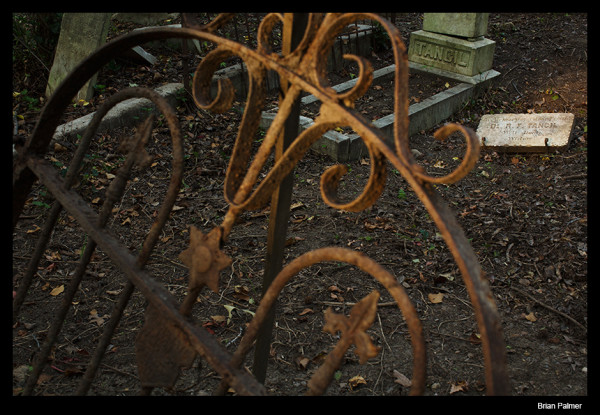
Tancil family burial plot at East End Cemetery, Henrico County, VA. July 26, 2015.
Last summer, I photographed the very modest grave marker of Dr. Richard Fillmore Tancil, a prominent Richmonder, at East End Cemetery. The marker, an engraved stone tablet, was roughly two feet long and half as wide. Next to it was the much larger headstone memorializing his daughter, Mary, who died at 18.
Three days after I made my photo, Dr. Tancil’s marker was gone.
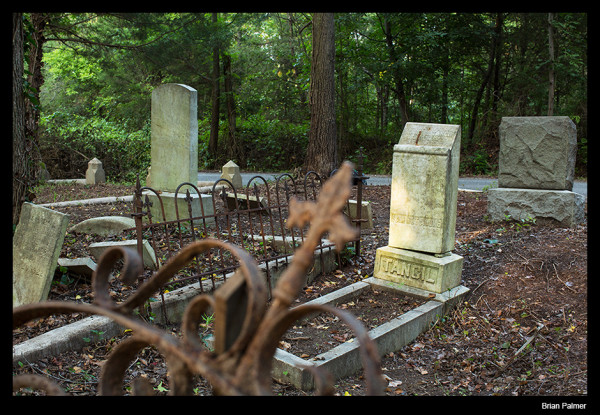
Tancil family burial plot at East End Cemetery, Henrico County, VA. July 29, 2015.
Volunteers who had been clearing the overgrown cemetery (I’m one of them) feared the worst. Desecration and trash dumping are popular pastimes at East End. We searched cleared areas of the burial ground, hoping that the thief had second thoughts and tossed the headstone into a tangle of brambles. Nothing. We asked the wife of a Tancil descendant whom we had been in touch with—she later visited the cemetery from her home in Oregon and shared family stories with us—to ask if the Tancils had removed it. No, they hadn’t.
This may sound like a small thing, the theft of a single marker from an abandoned Virginia cemetery, but we, the volunteers, were crushed. Dr. Tancil is beyond special to us. He is our ironclad answer to a question we hear so often: Why does this old cemetery matter? But he is more than that.
There are other Richmond notables interred at East End, which opened in 1897. I should say black Richmond notables—African Americans established East End because white cemeteries were closed to them. Some white Virginians believed that Jim Crow should be for eternity.
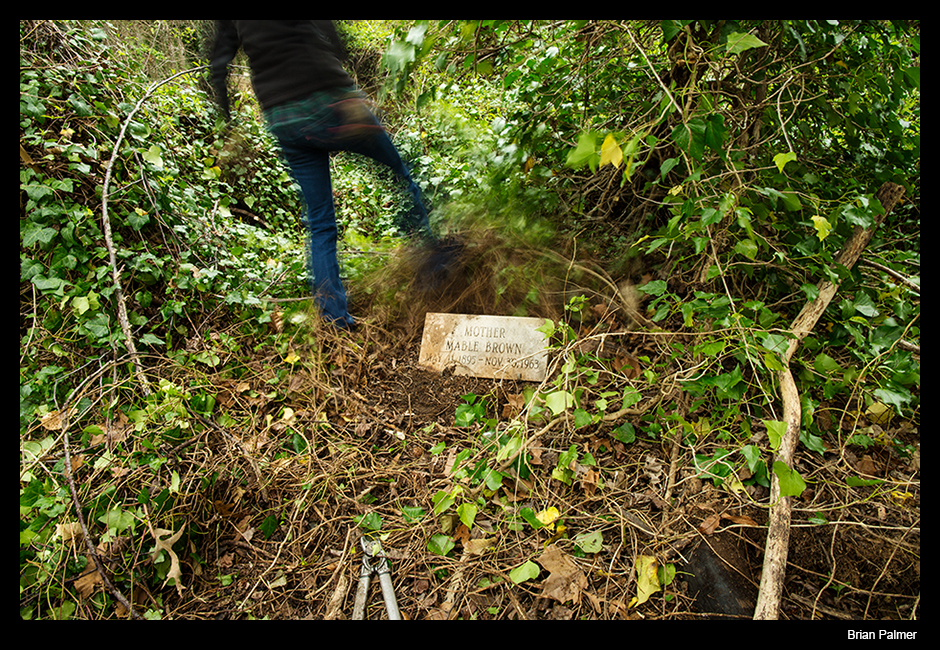 Erin Hollaway Palmer, Brian’s wife, clears English ivy from the headstone of Mable Brown, East End Cemetery, Henrico County, VA. March 2016.
Erin Hollaway Palmer, Brian’s wife, clears English ivy from the headstone of Mable Brown, East End Cemetery, Henrico County, VA. March 2016.
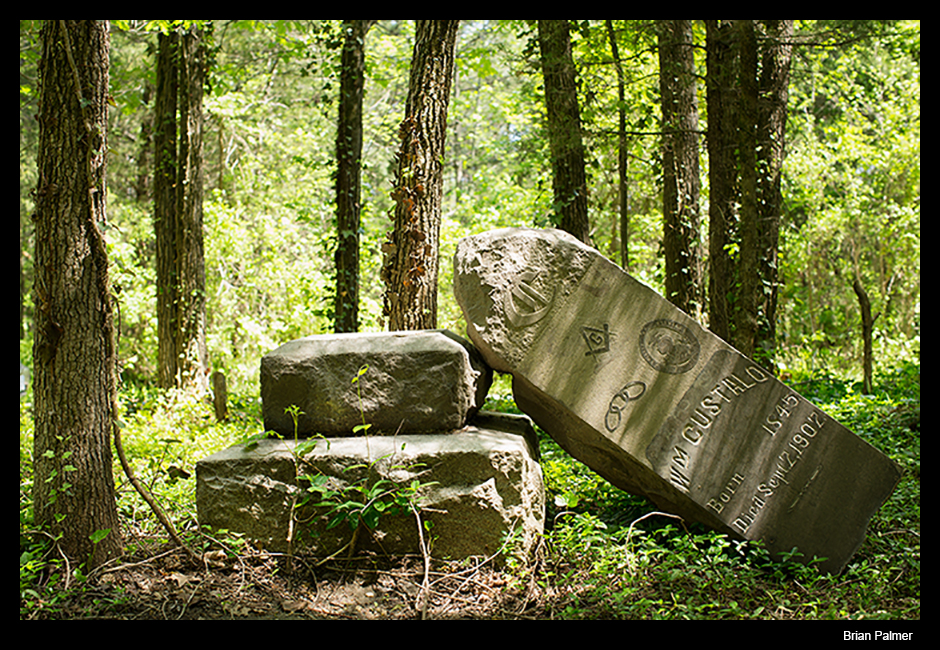 Custalo family headstone at East End Cemetery, Henrico County, VA. May 2015.
Custalo family headstone at East End Cemetery, Henrico County, VA. May 2015.
There’s Rosa L. Dixon Bowser, born enslaved, the city’s first black public school teacher. She led the segregated Virginia State Teachers Association, and founded and headed the Richmond Woman’s League. There’s Hezekiah F. Jonathan, born free—as free as an African American could be in the slave South—who owned a fish wholesaling company and served as a bank vice president. William Custalo, also born free, became one of the city’s most prominent restaurateurs—black or white. As a young man, he was a union activist involved in interracial labor organizing. There are thousands of other less prominent folks whose lives are no less important—laundresses, homemakers, domestics, plasterers—at rest in East End.
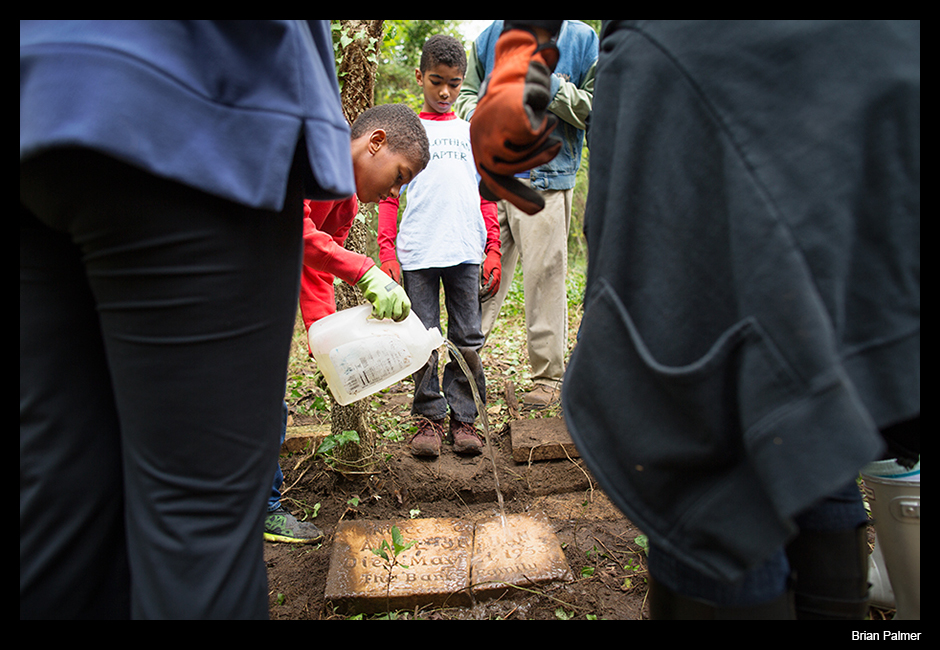 Youth from Jack and Jill rinse a grave marker they uncovered while volunteering at East End Cemetery, Henrico County, VA. October 2015.
Youth from Jack and Jill rinse a grave marker they uncovered while volunteering at East End Cemetery, Henrico County, VA. October 2015.
But Dr. Tancil is arguably the most prominent among the prominent there, the apotheosis of black Richmond at the turn of the 20th century. He began life as Rosa Dixon did, as property, but he achieved an astounding level of success for a “colored man” at that time. Tancil, born with the same legal status as a cow or a bushel of corn, went to school when it was legal for him to do so, after the Civil War. He attended Howard University as an undergraduate, and then earned his M.D. at the medical school. During the very brief period that blacks enjoyed political rights in Virginia, Dr. Tancil and another black physician were appointed assistants to the white director of the Central Lunatic Asylum by the state legislature. And Dr. T kept ascending. He became the director of the Richmond Hospital and the president of the Nickel Savings Bank. Later, he set up another bank. Susan, his great-grandson’s wife, told us that Dr. Tancil was known as a good-natured, funny, and generous man whose affluence was evident in his bulging waistcoat, from which dangled a gold watch.
Dr. Tancil didn’t sit on his wealth; he stood with other members of the community to fight Jim Crow’s rise in Virginia, pledging public support and money to a 1904 boycott of newly segregated streetcars. They lost that battle (and then the war against segregation, too), but he persevered, even thrived. His two greatest sorrows in life, Susan told us, were not being able to save his daughter from TB or to cure his wife’s breast cancer.
Richmond has fetishized and memorialized its white Confederate dead lavishly for more than 100 years. Societal value—and public funds—has been invested in the public memory of the Confederacy. Much has changed for the better in the past 50 years, but the priorities established by Richmond’s white elite are literally set in stone. In 2015 and 2016, the Virginia state legislature gave private groups like the United Daughters of the Confederacy more than $82,000 each year to maintain Confederate graves and memorials, on public and private property. That’s not a gift, it’s part of the Virginia state code. And this is only one slice of public money devoted to maintaining monuments to the Confederacy.
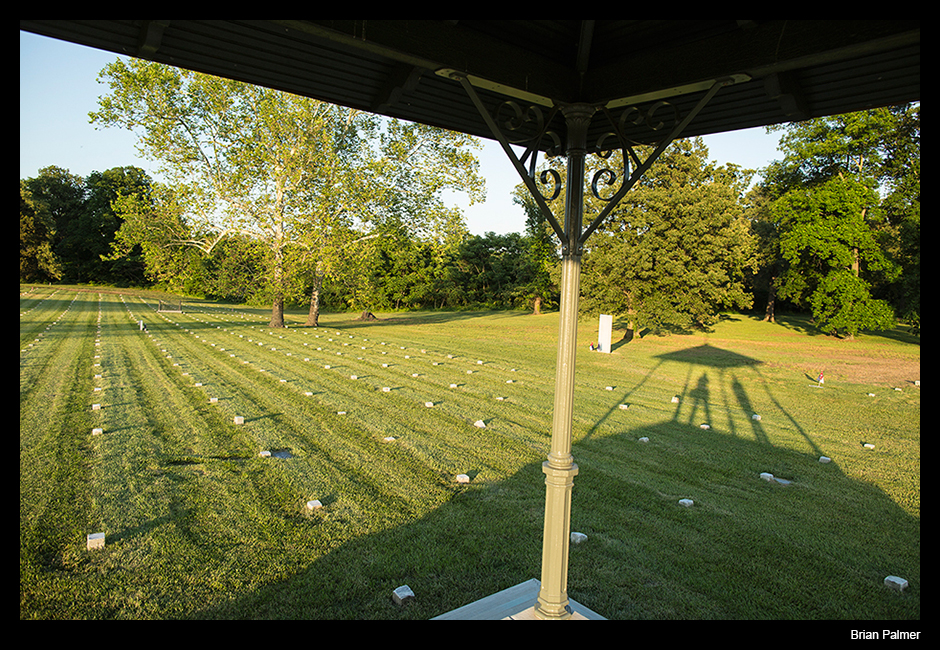
Erin and Brian at Oakwood Cemetery, Richmond, VA. May 2015.
East End gets no public funds, though Henrico County hauls away brush that we clear and the trash we gather. There is no gate or fence to bar or limit access to anyone who wishes to visit or dump. Across the street, however, 2,000 graves in the Confederate section of Oakwood Cemetery, a public cemetery, receive state money—my money—for maintenance, through the Sons of Confederate Veterans.
People ask: How did East End wind up in such a terrible state? Months ago, I asked the owner, an 87-year-old man who is the last surviving member of the community association set up to run the cemetery in 1970. “The cemetery went [into] default, and it was unfinancial,” he told me over the phone. “The folks who had their names in the cemetery did not keep it up, and I didn’t offer perpetual care, so that’s what it is. I have no further information to give to you.” He assumed the county would step in. That has not happened.
The roots of the cemetery’s decline go deeper than the burial association’s short period of stewardship. At the end of the 19th and beginning of the 20th century, Virginia’s white elite launched a sustained attack on black political and economic power that continued past the mid 20th century. They destroyed neighborhoods, figuratively and literally—Richmond’s city fathers drove a highway through Jackson Ward in the 1960s—and ensured residential and school segregation for decades beyond Brown v. Board of Education. When they lost that fight, many whites fled the city.
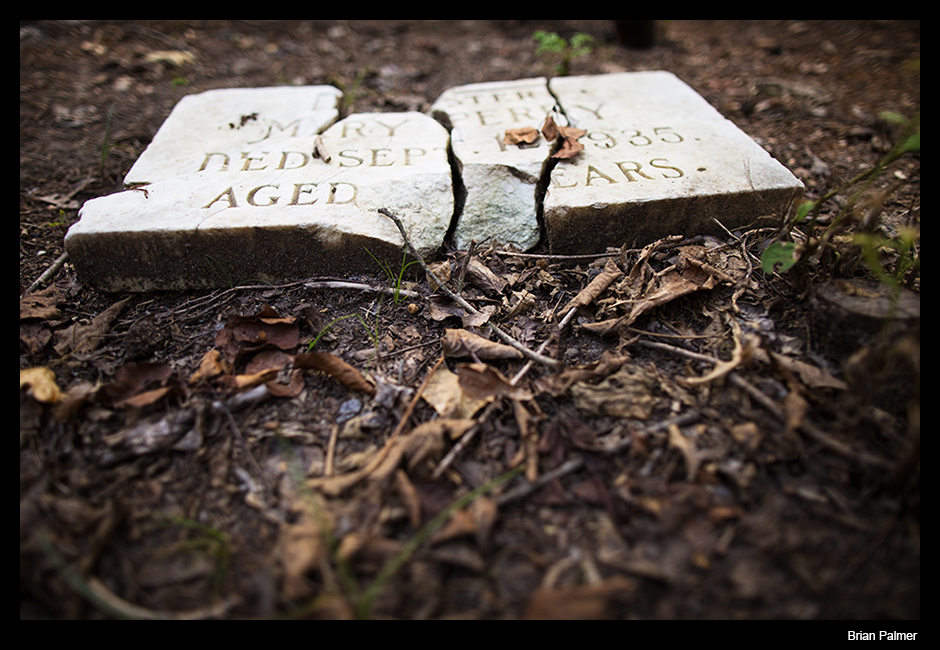 Fractured grave marker at East End Cemetery, Henrico County, VA. July 2015.
Fractured grave marker at East End Cemetery, Henrico County, VA. July 2015.
Black communities were battered by the decades-long onslaught. Many people left in search of opportunity, moving away from their ancestors buried at places like East End and neighboring Evergreen Cemetery, which is three times as large. Some descendants kept up—or paid others to keep up—their relatives’ graves, but they couldn’t tend to all 16 acres of the place. Nature took over. Illegal trash dumping and desecrations accelerated. Criminals did their thing, too, even leaving behind a dead body or two. Paradoxically, the end of legal segregation may have sealed East End’s fate as once off-limits white cemeteries, some closer to the city proper and better tended, opened to blacks.
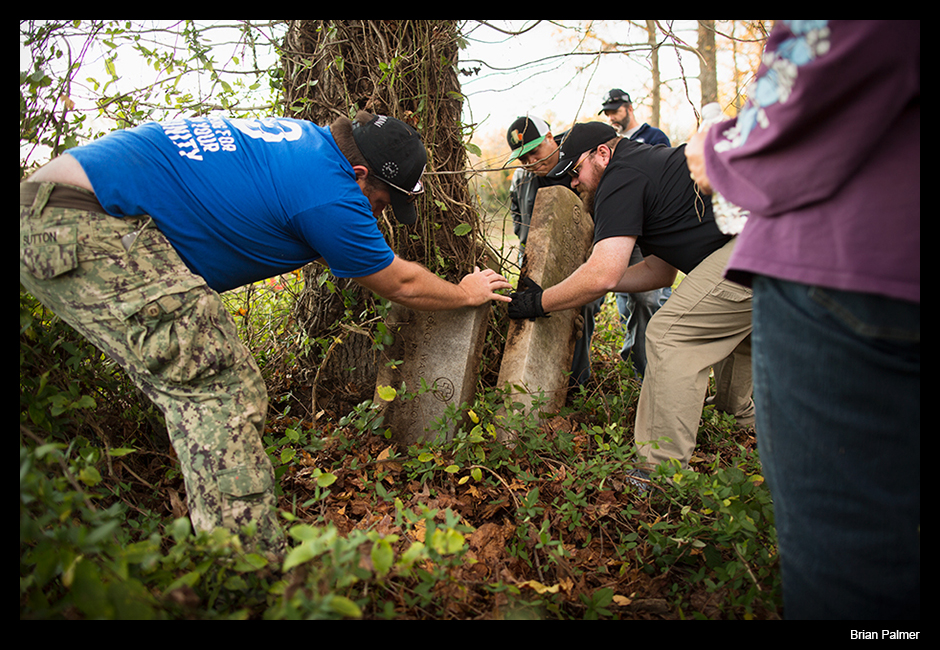 Veterans, wounded warriors, retrieve headstones of fellow servicemen from overgrowth at Evergreen Cemetery in Richmond, VA. November 2015.
Veterans, wounded warriors, retrieve headstones of fellow servicemen from overgrowth at Evergreen Cemetery in Richmond, VA. November 2015.
These images don’t fuel Southern nostalgia like the Confederate colossi across the city. They show a particular part of the Southern experience, the black part, which, to a large extent, has been unvalued, devalued, and neglected. This was initially by design; now it is mostly through indifference. But I hope the pictures do more than rebuke white viewers—Here we go again, one more charge of racism to endure—or shame black ones for not preserving our own heritage. I’d like viewers to look at the images long enough to see something other than ruin and tragedy, to feel more than indifference, guilt, shame, or anger. I want people to see possibility—of new understandings and connections, of truth and reconciliation with our contested past.
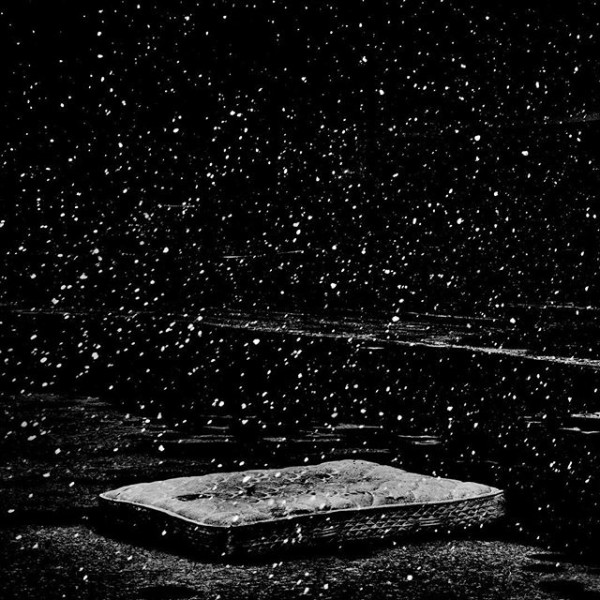
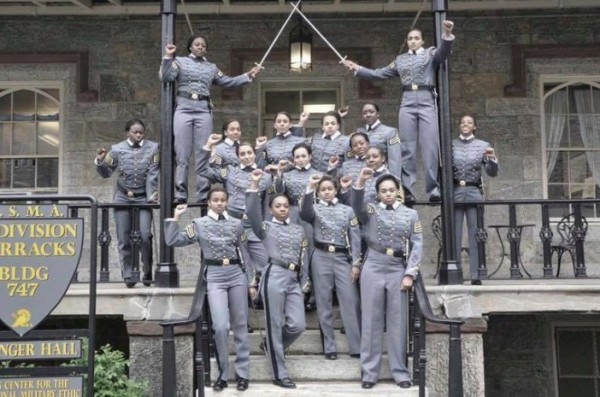
Reactions
Comments Powered by Disqus